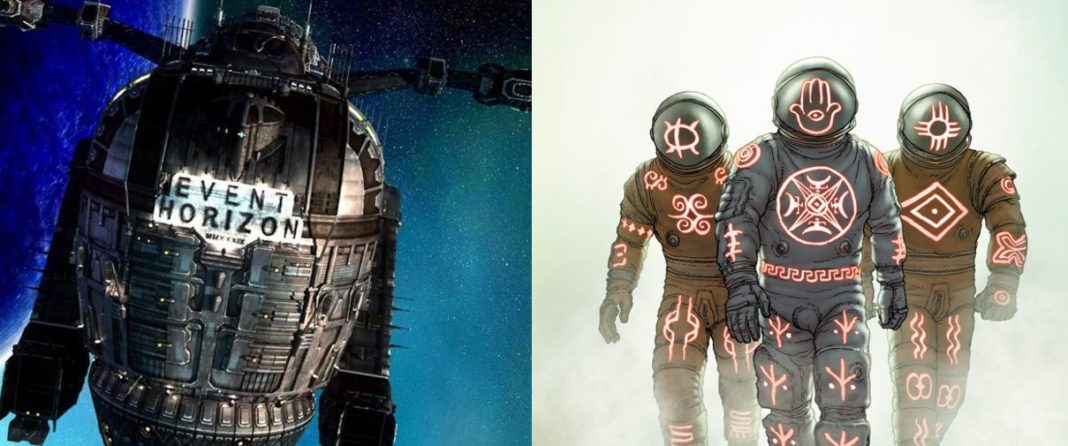There’s Blood on My Comics! is a bi-weekly horror column about how our comics make us afraid of turning to the other page. But it doesn’t stop there! Oh no, it doesn’t. Each horror comic will be paired with a horror movie that shares a similar approach in getting those blood-curling screams out of us. It’s like pairing fine wines with perfectly cooked meals, or Blood Cocktails with sacrificial goat cheeses. This week: Nameless and Event Horizon. Enjoy!
Fear of space
Hell and space were made for each other. For many, it was an idea presented by way of demons and shotguns in the 1993 video game Doom. For others it was through Paul Anderson’s fan-favorite sci-fi/horror movie Event Horizon (1997), about a spaceship that traveled to Hell and came back with something terrible on-board. Newer generations came into contact with this type of horror through another video game called Dead Space (2008), where scientific inquiry extends an open invitation to a cosmic evil that, like Doom, turns a space station in a den of demons.
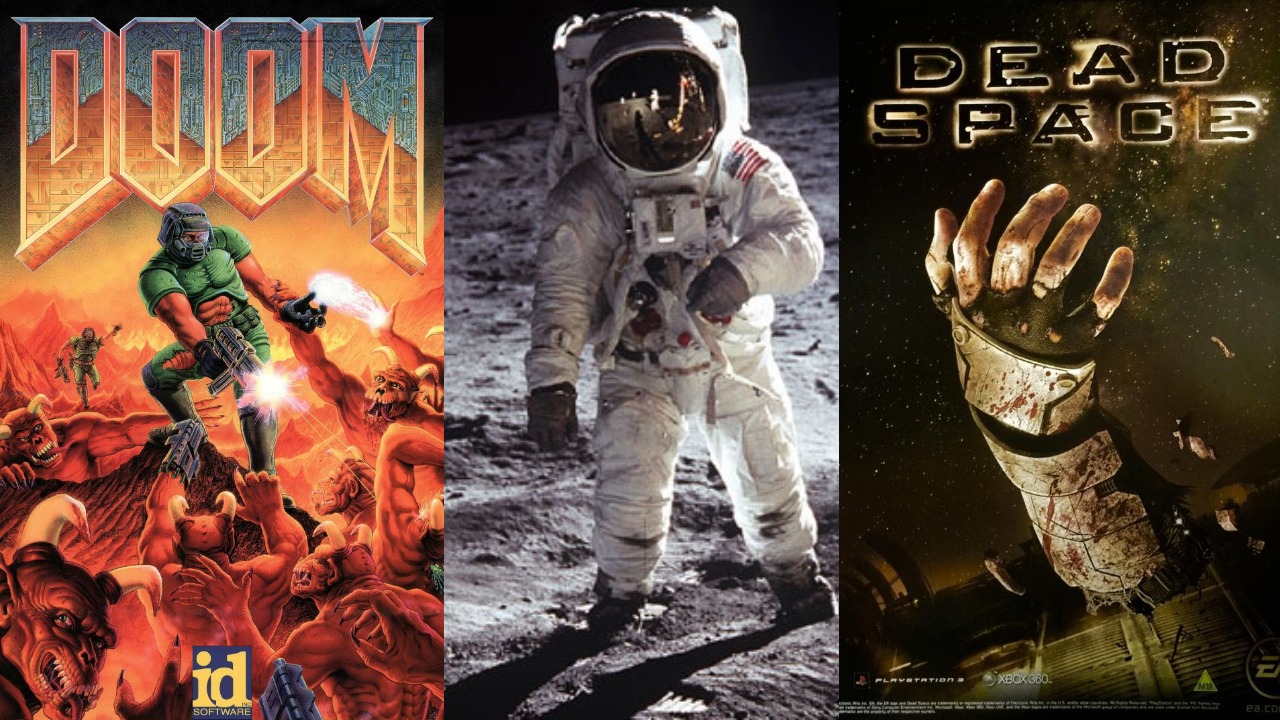
Even NASA, as it prepared to launch its first manned mission to space in the 1960s, feared the possibility its astronauts would catch a bad case of “space madness,” a form of trauma psychiatrists warned could manifest itself when humans came face to face with the realities of space and how alien it could feel. A very personal version of Hell no one wanted to be stuck with.
In 2016, the comics world gets one of its most terrifying, sadistic, and complex looks at Hell in space in the form of Grant Morrison’s and Chris Burnham’s Nameless. The series, published by Image, follows an occult expert on a space mission tasked with diverting the path of a haunted asteroid that’s headed straight to Earth. The asteroid is inspired by Mayan and Polynesian myths and iconography and it’s revealed that it could be a prison for an old god stuck in our dimension. Morrison and Burnham bring the reader as close to madness as they possibly can, with reality and evil occupying an unstable space filled with hellish imagery.
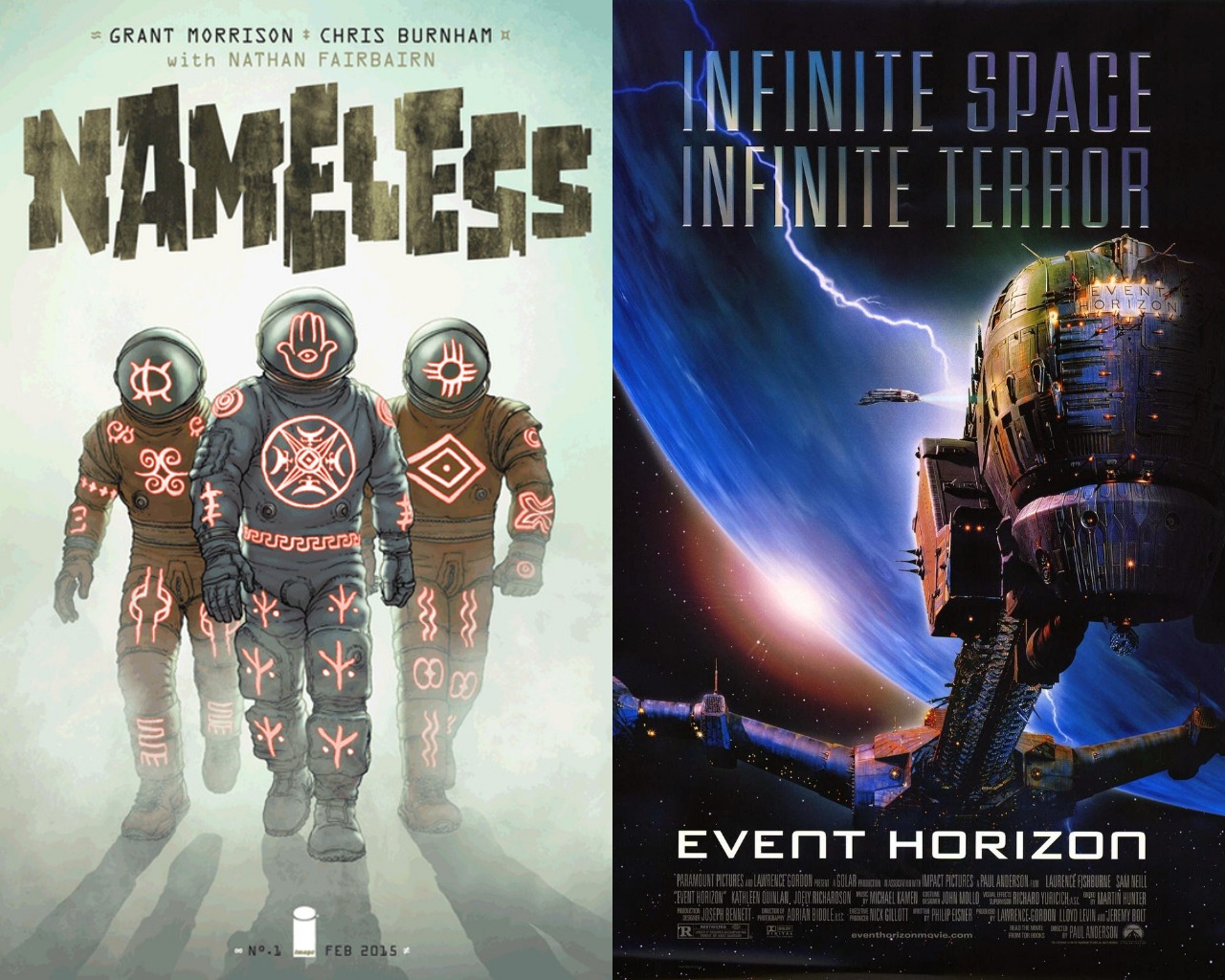
What’s interesting and scary about Nameless is how well it corresponds with Anderson’s Event Horizon, which I consider to be one of the best horror films of all time. The film—which is getting its own tv series—digs deep for its chilling visions of Hell in space and it begs a look at how its Hell compares with that of Nameless, which is based in part on the Mayan underworld of Xibalba rather than on the classic Hell of Christianity.
Flashes of torment
Nameless looks at the idea of Hell as a way to test just how reliable reality can be. How it does so is where it meets Event Horizon. Both comic and movie take a very measured, almost tease-like approach to the glimpses we’re afforded of Hell. We never get a full exploration of the horrors they bring. It’s more like a very guided tour that’s designed to dare readers and audiences to fill in the blanks based on the glimpses of Hell they get.
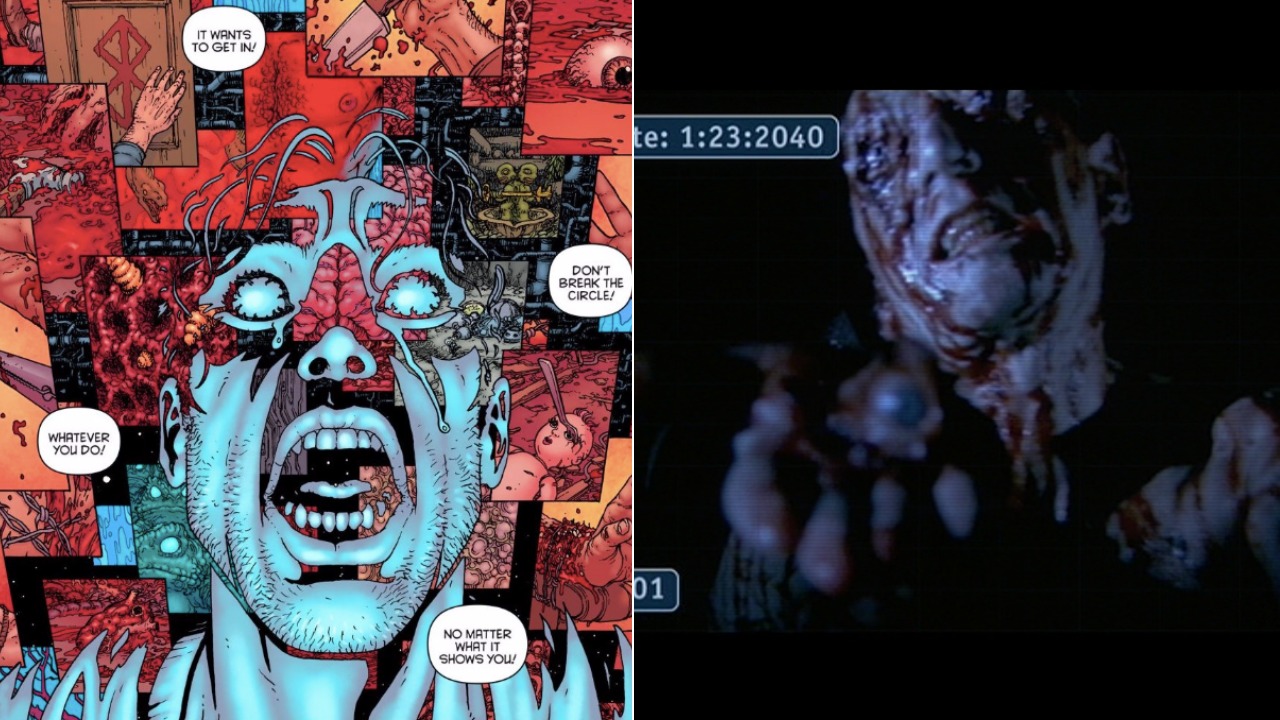
Event Horizon goes for literal flashes of Hell where we’re allowed somewhat of a look at how horrible and sadistic this dark dimension is. The sounds of flesh tearing apart and screams fill the background as blood and barbed wire rush through the screen just enough to let viewers in on its Hell’s particular taste. The doorway to Hell in this case is opened by way of a gravity drive, a sphere surrounded by three moving rings that allows the Event Horizon, the titular spaceship, to fold space and time to jump between dimensions for faster space travel. It’s in that folding process that the Event Horizon lands on the dark dimension that hitches a ride on the ship.
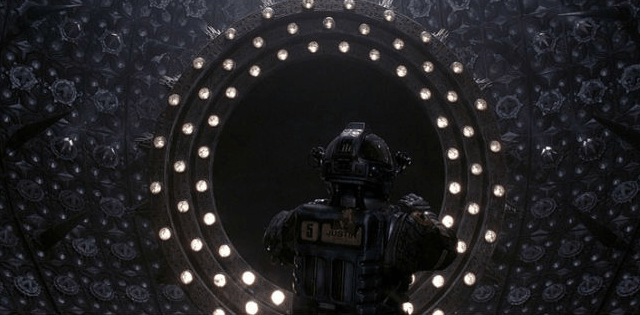
In Nameless, these visions come in short sequences with quick jumps in between hellish imagery and reality. Maiming and dismemberment are dealt in heavy doses in the pages of Nameless, but it’s never more than 1 or 2 pages at a time. While you can spend as much time as you want in these sequences given the nature of comics, in which the reader controls the pace, the comic doesn’t overstay its welcome in these quick shots of sadistic violence.
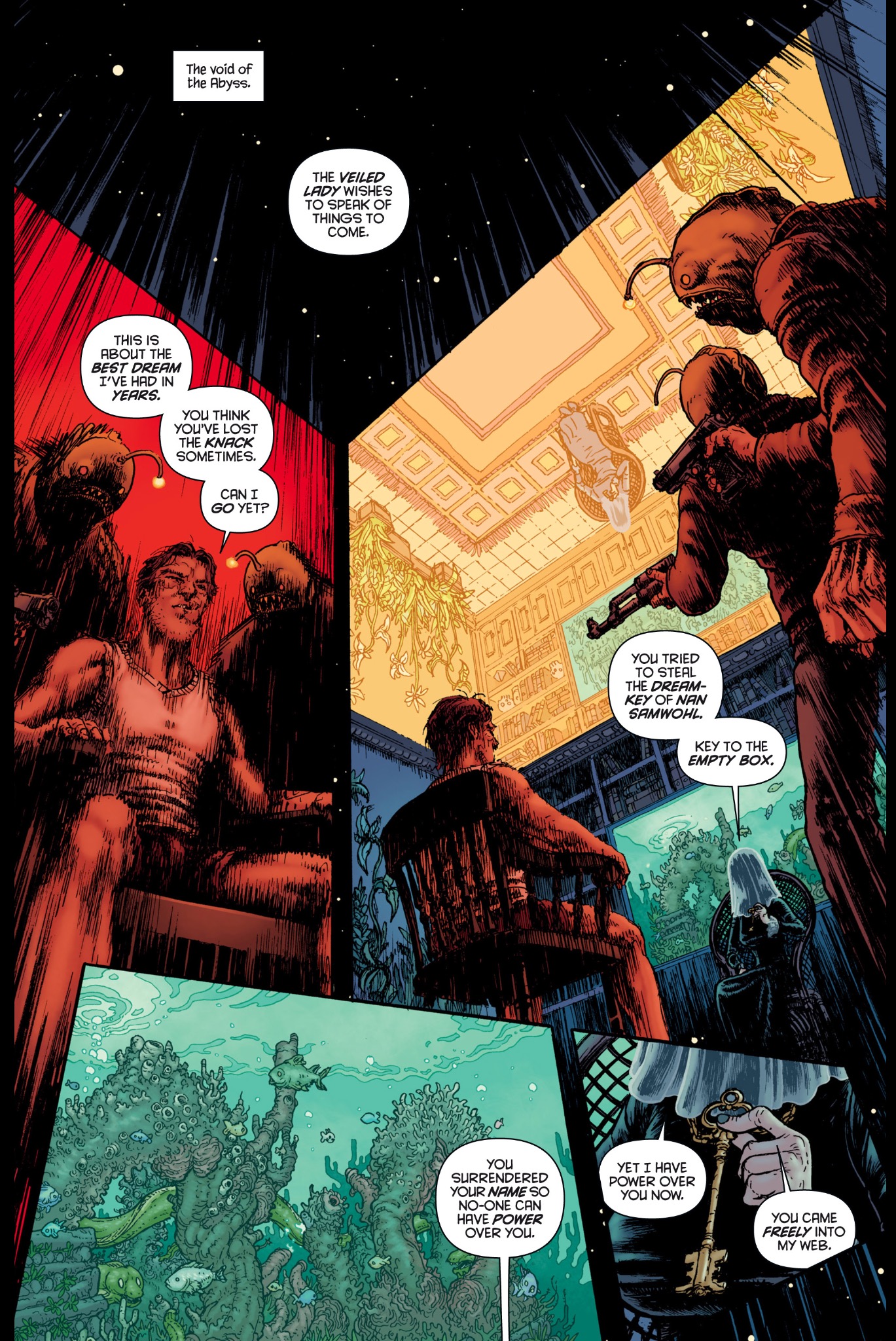
What is unique to Nameless is the amount of detail found in the book’s more brutal images. Chris Burnham is an artist that fills comics pages with dark discoveries. He really knows how to speak volumes with images and each note of violence in them is there to be dissected by the reader. Burnham’s panels are as complex as Morrison’s contemplation on torment and reality. Just how twisted your reading experience ends up being depends on how long you stay on each of its bloodiest panels.
Event Horizon, on the other hand, takes that kind of control away from the audience. What we get in this case is a taste of something horrible that only scratches the surface of how bad its Hell can be.
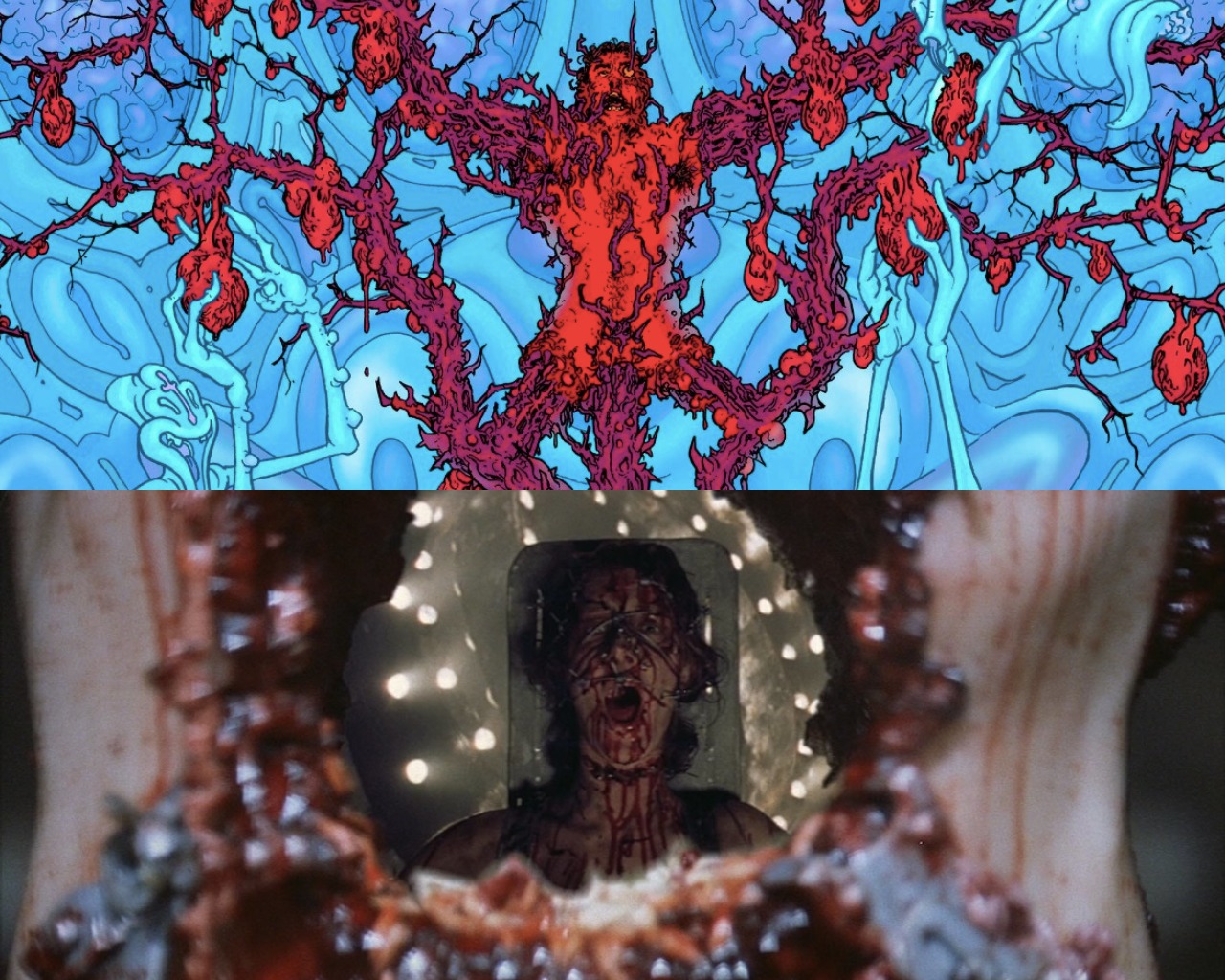
Then again, and thanks to the magic of the pause button or user-edited YouTube videos, we can now look at each of the frames contained in those flashes to dissect the brutality of its hellscapes. In fact, by looking at the stills from Event Horizon’s violent Hell sequences, we get to appreciate just how detailed and macabre they really are. Anderson didn’t hold back in these flashes, developing a realm of pure carnage with body parts and corpses all strewn about in a ritualistic manner. Nameless and Event Horizon feel even more similar when you freeze-frame the movie’s Hell flashes and compare them with those found in the comic.
Spacewalking through Hell
Nameless and Event Horizon never miss a chance to remind their audiences that their Hells are unavoidable because they’re in space. There’s nowhere to run in space. The only way to safety is through Hell in these stories, which is an interesting flip on the haunted house template. There’s always a way out in a haunted house. A window, a back door, a secret passage. There’s a real chance of escape. Space entertains no such hope. Leaving the spaceship equals death, especially in the absence of escape pods or full oxygen tanks. This is what makes space Hells so frightening.
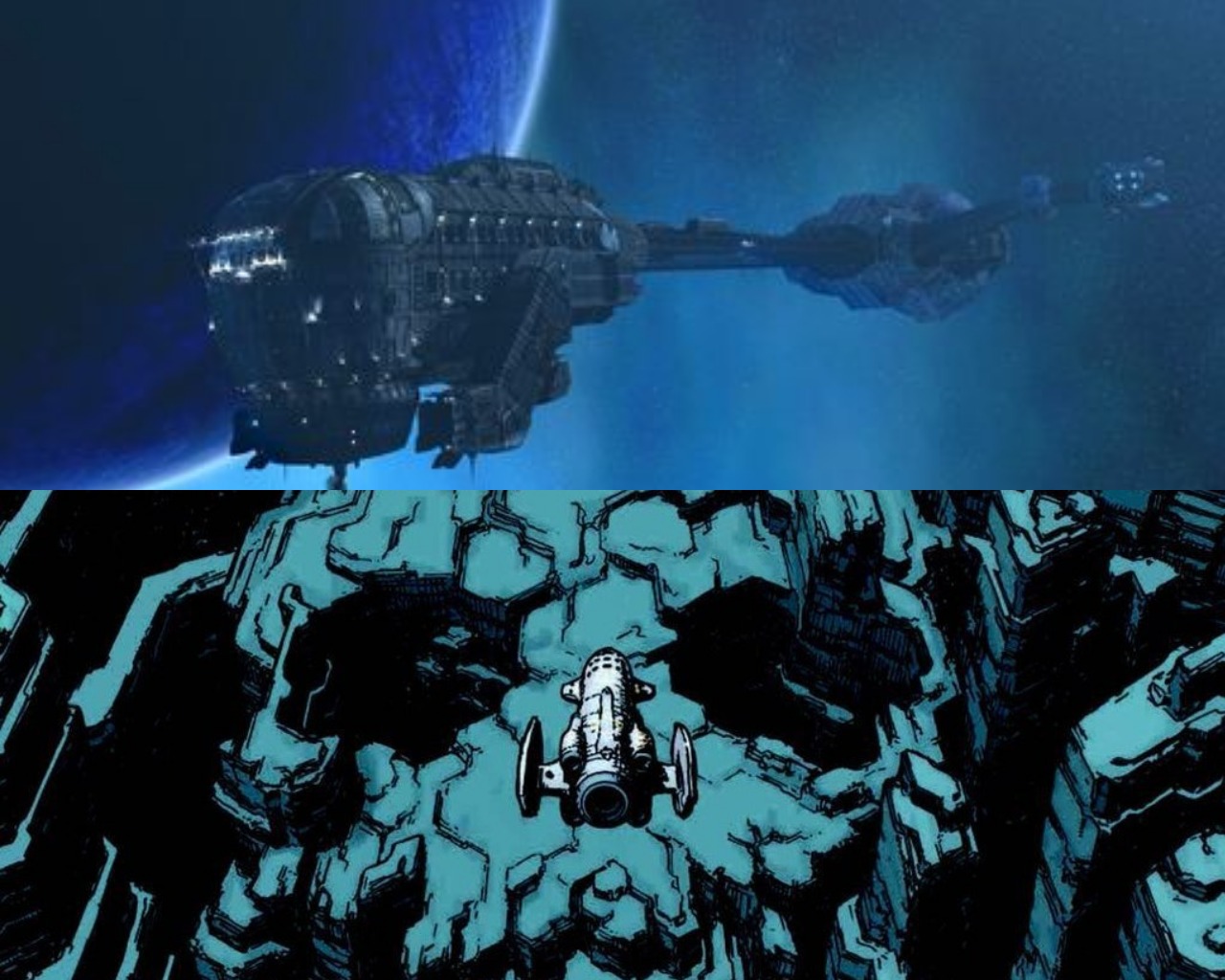
Nameless falls back on brutalist architecture to set up its inescapable space Hell. Brutalism is a style that saw its rise to fame in the 1950s and it was characterized by a strong monolithic vibe that favored concrete-heavy “block” buildings. It’s the kind of structure we usually see in dystopian fiction. It’s utilitarian, rigid, and damn disturbing to look at. It’s an unwelcoming type of architecture.
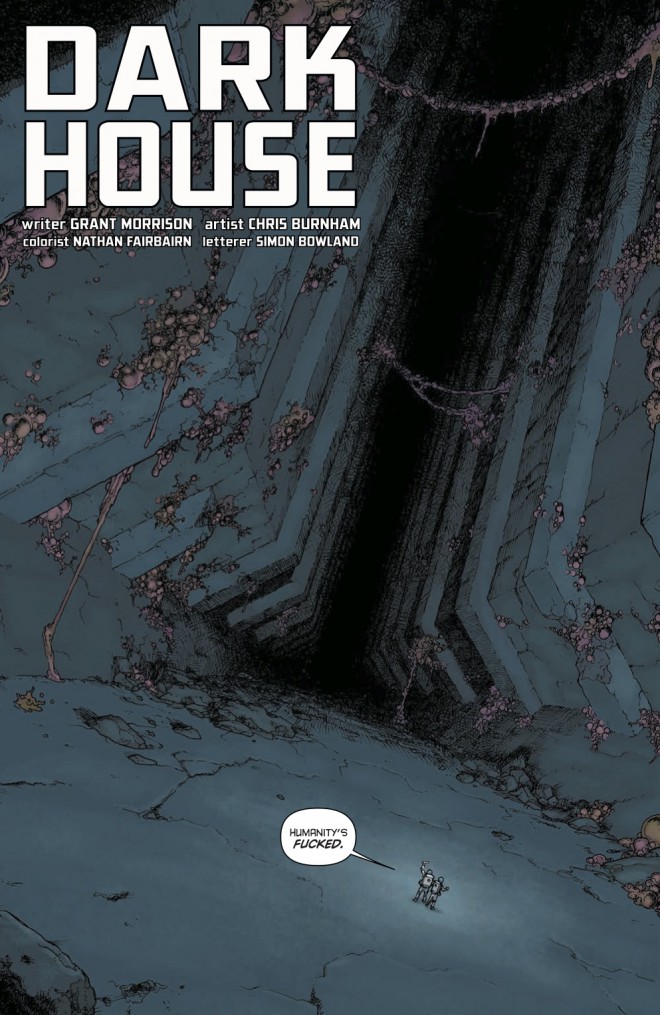
Morrison and Burnham take this approach to create an oppressive and hostile environment with giant and hollow corridors, all of which lead to tears in reality and endless suffering. It’s fitting that Morrison refers to Xibalba with such frequency when referring to its dark dimension. The word literally translates to ‘Place of Fear’ in K’iche’ Maya mythology. Xibalba was thought to be a giant city where death gods held court and governed over lesser entities that did their bidding in the land of the living. It was once believed to be an actual place found through cave systems located in Guatemala and Belize.
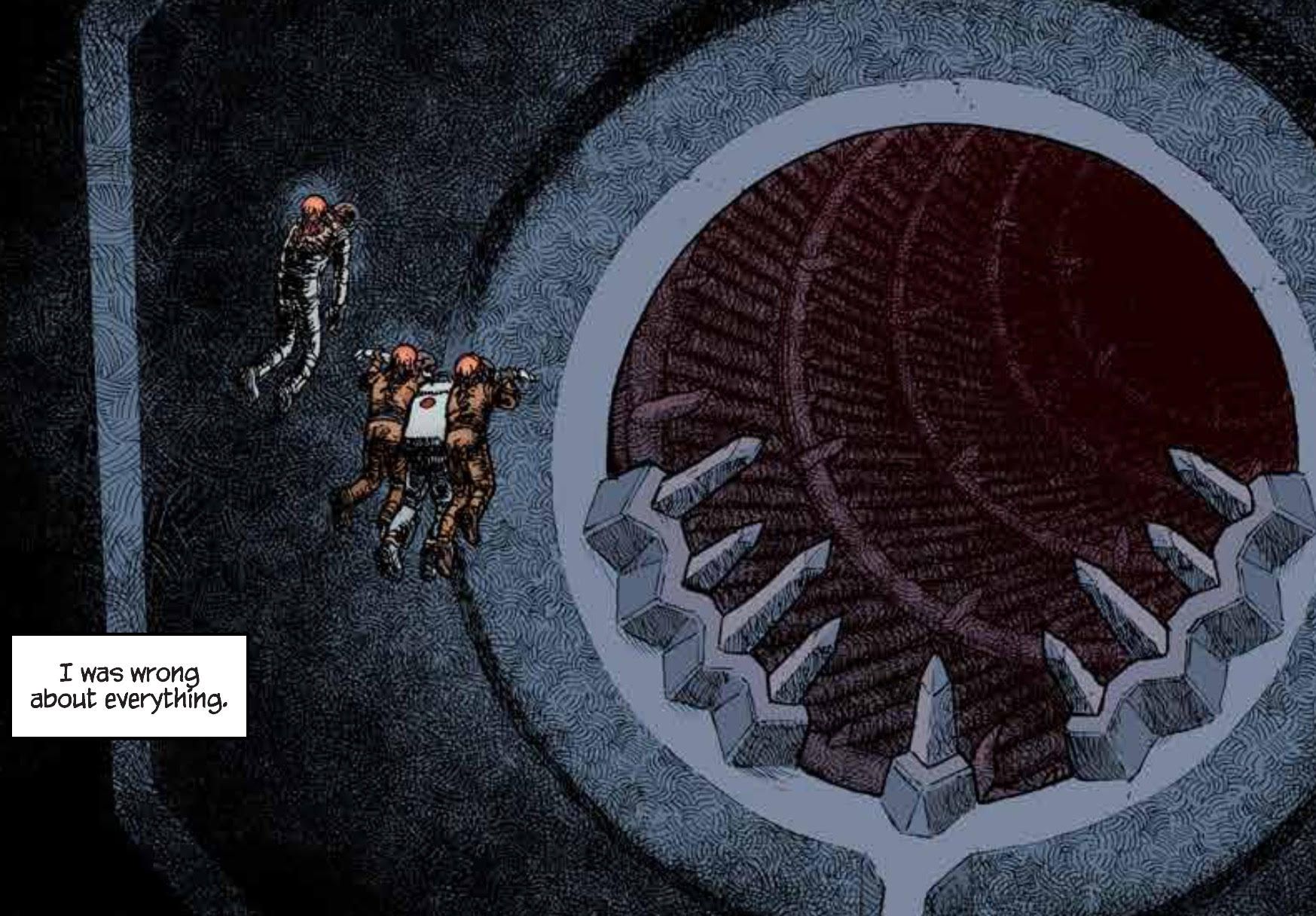
With the Xibalba of myth in mind, Morrison’s and Burnham’s brutalist corridors and blocky structures acquire a whole new layer of cosmic terror. It means the horrors of Earth can travel all the way to space. The same cannot be said of the people stuck in these places. For them it’s either a fatal walk in space or eternal damnation in twisted dimensions. This is horror world-building at its finest. And then there’s what lies at the core of the brutalist structure.
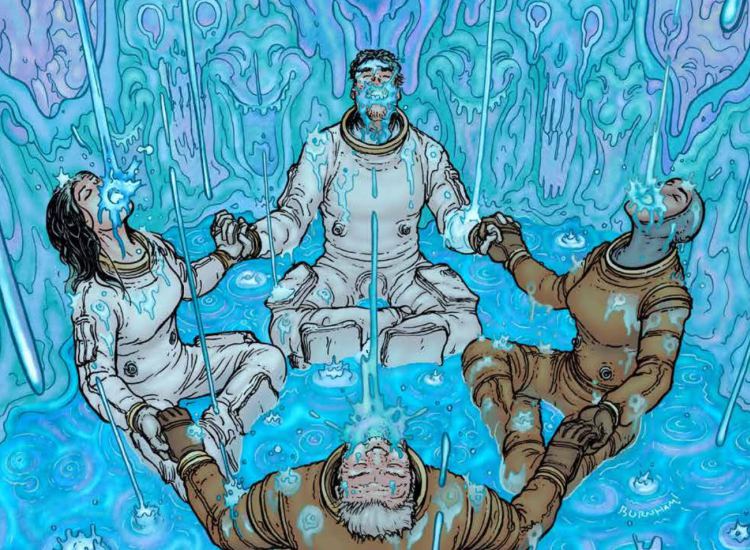
Bright colors that form clownish faces in the background await those who’ve stumbled into Xibalba. These shapes coupled with other horrible sights are but samples of a much wider and diverse selection of horrors we’re left up to create in our own minds. And just as we descend deeper into the unknown, Morrison and Burnham bring us back to space, to remind us there’s no escaping it. No door, no windows, and no one to hear you scream (the tagline to Ridley Scott’s Alien, co-authored by screenwriter Dan O’Bannon while playing with the idea of a haunted house in space, complete with its own hellish creature and inescapable horrors).
Event Horizon also indulges in open spaces and wide areas where a step in any direction can land you in a torture chamber fully stocked in barbed wire. All paths lead to the ship’s gravity drive, which acts as its hot spot. This is where space and Hell meet. It’s the doorway to all that’s wrong with the ship.
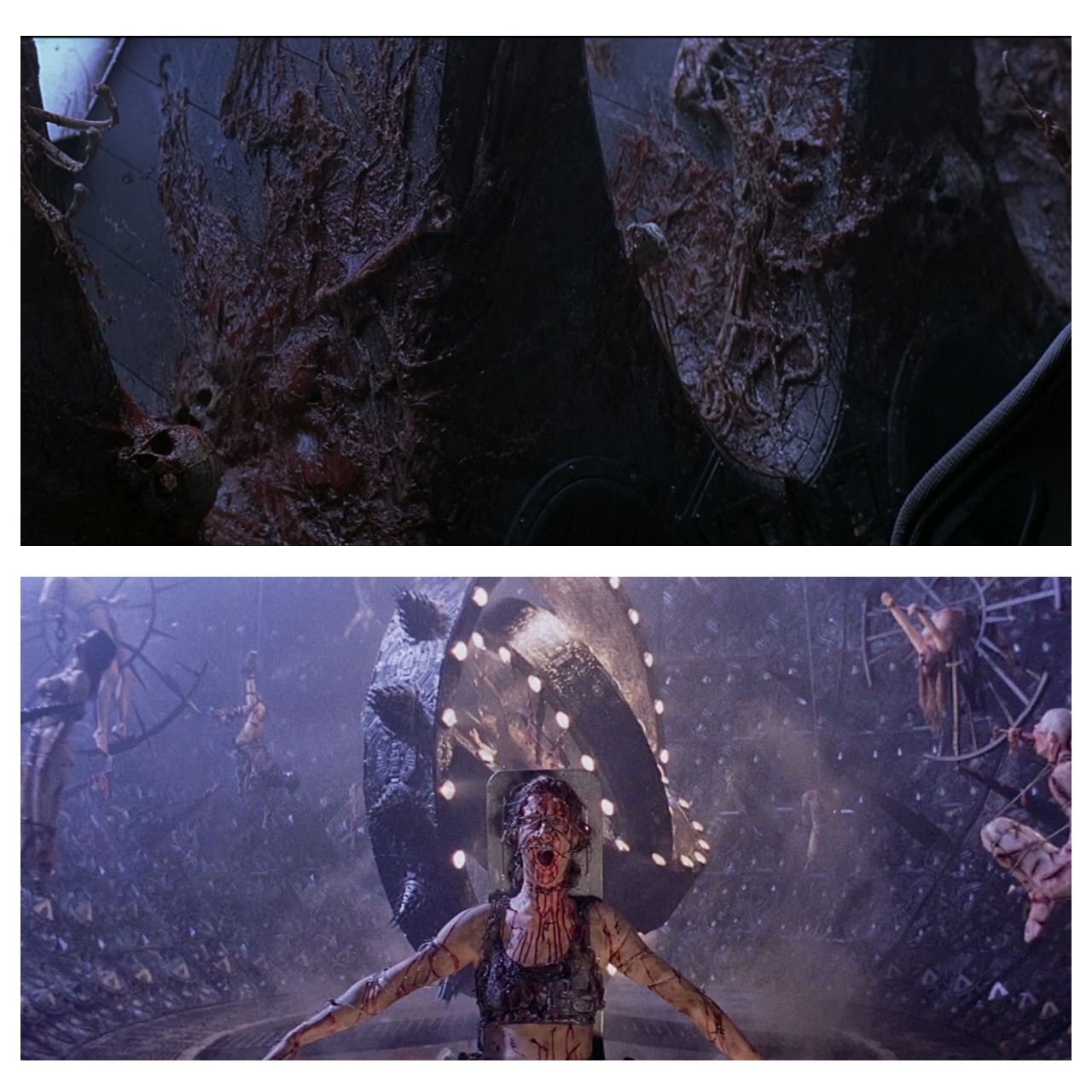
The Event Horizon spaceship goes for a more Gothic approach, with intricately designed walls that evoke darkness, both figuratively and physically. It even comes with a connecting hallway, which leads to the gravity drive, that’s basically a rotating cylinder stuck with razor blades. The gravity drive itself is housed in a room that looks like it can cut to pieces anyone who decides to lean on its walls. It all makes the Event Horizon feel as hostile as Nameless’ Hell. And like in Nameless, Paul Anderson is always a scene or two away from a shot that reminds us we’re in space and that we’re stuck in between dimensions with nothing even close to resembling a safe space.
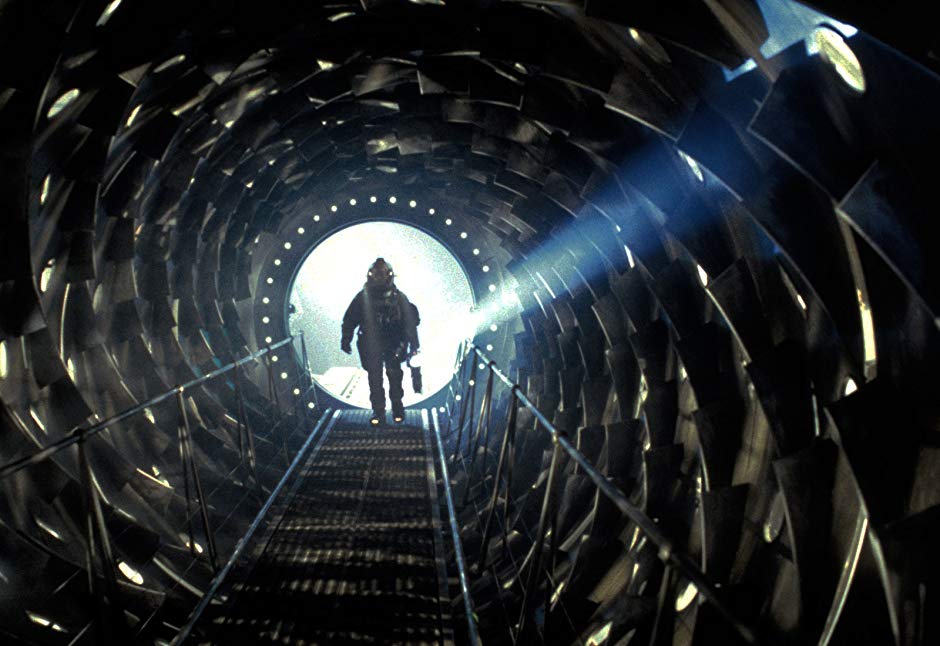
Ex Inferis
The concept of Hell in space stands one the most terror-inducing ideas of its kind, especially where science fiction and horror are concerned. There’s no happy ending in it. Suffering, torture, and sadism are the new normal in these settings. Nameless and Event Horizon hold their heads high as the gold standard of fear in this area.
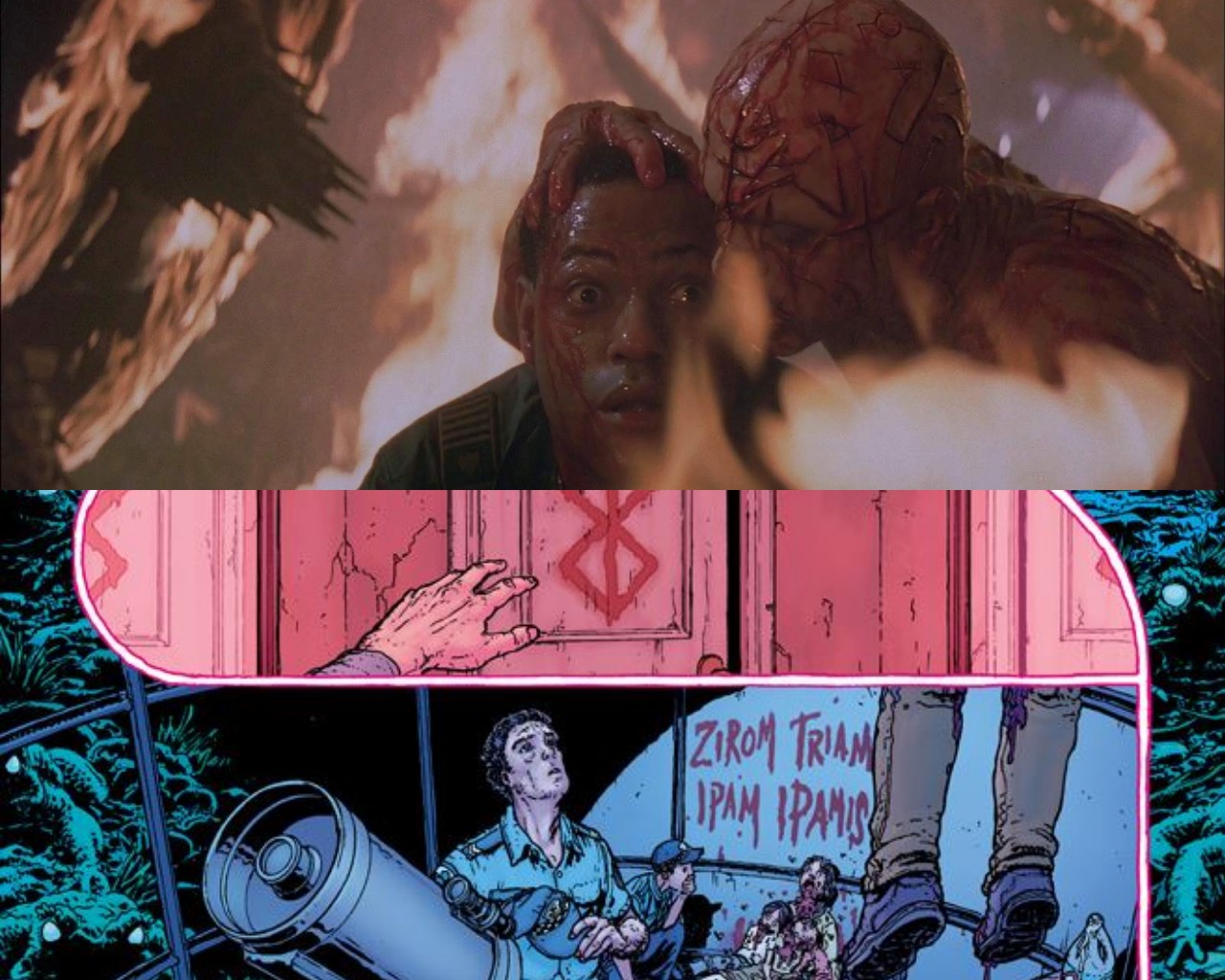
This look at Nameless and Event Horizon just scratches the surface of all the things these two stories do so well in capturing the inevitability of Hell in space. There’s the use of ancient languages in both stories as a way to create a larger mystery surrounding the origins of their Hells. There’s the use of magical symbols to imbue the darker realms with a more robust sense of the macabre. There’s the body horror elements and the similarities found in both stories when it comes to how each dimension approaches torture. In other words, there’s a lot more Hell to look at in Nameless and Event Horizon. Perhaps another trip to Xibalba on the Event Horizon is already in the cards.


